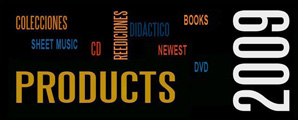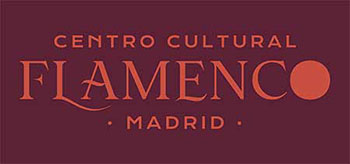|
THE FLAMENCO YEAR 2009
in CDs, DVDs, Libros, Methods, Sheet music… |
| by Rafael Manjavacas
Another recession year…in the world in general, and in music and flamenco in particular, and we’re more or less getting used to the idea. Despite everything, life goes on, artists continue to create and to feel the need to make their work known to the public. The industry has changed, and tends to stick to tried and true artists, the sure bets, people who in flamenco can be counted with the fingers of one hand. Even so, 2009 saw the appearance of a respectable number of recordings, very few DVDs and a good number of books. In addition to instructional books, sheet music and similar products, specialized publishers did their job and published quite an assortment of texts. Here is a rundown of the most noteworthy items: not everything published is here, but it’s a healthy assortment. CDs Towards the end of the year there were new recordings such as Enrique Morente’s “Morente Flamenco” made from live recordings never before published, the second recording of Argentina “Las Minas de Egipto”, Pansequito’s new record “Un Canto a la Libertad”, which cante-lovers were happy to see come out. Also noteworthy is a record by Almería singer Alfonso Salmerón “50 Years of Flamenco”, who is to receive a well-deserved tribute at the beginning of the year. Other cante recordings include Antonio Campos’ first recording “En Directo – Corral del Carbón”, and “El Espejo en que me Miro”, the first record of David Lagos, both well-known as singers for dance. Almería singer Montse Pérez presented her record “Mirada Flamenca” in Madrid early in the year, and her sister María José Pérez brought us “Cante Flamenco”, Niña Pastori remembered her flamenco roots with “Esperando Verte”, María Toledo made her first record and maestro Diego Clavel brought out another double CD, this time of siguiriyas. This year from Cádiz, Mariana Cornejo “Mariana de Cádiz” and Carmen de la Jara, a double CD “Tesoros del Cante Antiguo Gaditano”. In Jerez, Antonio Reyes with “Viento Sur”, La Macanita with two records, “Sólo por Eso”, and in a threesome with two other Jerez women, Juana la del Pipa and Dolores Agujetas, who came together for the record “Mujerez”. In guitar, Vicente Amigo made “Paseo de Gracia”, and most noteworthy was Niño Josele’s “Española”, a great recording bound to be a success. Niño Josele also presented “La Venta del Alma”, a record already out of circulation, and only the record company knows why. Also in guitar, Paco Escobar recorded a lovely work, “Contratiempo”, Javier Patino made “Media Vida” and Raúl Mannola, “Guitarra Adentro”, all self-producded. The Universal record company brought out Paco Heredia’s record “El Niño de la Bella Sonrisa”, a new record by Juan Habichuela “Habas Contadas” and a compilation of the work of Ramón de Algeciras who recently passed away. Moving on to the area of fusion, instrumentals, groups and the like who are involved with flamenco to some degree, we have to include Miguel Poveda’s “Coplas del Querer” which will bring the Catalonian singer even greater popularity outside flamenco, and without a doubt, help attract new flamenco fans. Another artist enjoying a place at the top is El Barrio. A new record, “Duermevela”, is sure to fill stadiums as would any pop singer. It’s a pity his record company neglects to re-release his early work with the essence so many of his current fans seek to no avail. Mayte Martín recorded “Alcántara Miguel” as a show already presented at several flamenco festivals. Ojos de Brujo also made a new recording, “Aocana”, while groups like Almasala and Un Gato en la Luna try to find their place among followers of this music. Then there’s pianist Laura de los Ángeles with “El Callejón del Agua”, and another pianist, Miriam Méndez, with her album “Mozart Suena Flamenco”. Moy Natenzon made “Algo de Luz y Oscuridad”, Jorge Pardo, “Vientos Flamencos 2”, and personally I would recommend Tomasito’s “Y de lo Mío, ¿Qué” Re-releases are also an important part of the flamenco market. Universal with their label “El Flamenco es Universal” recuperated several records such as El Pele’s, two from El Sevillano, and one of Chiquito de Camas. DVDS Regarding DVDs, I may have missed something, but in this year 2009 we can only find the instructional DVDs for guitar by Mehdi Mohagheghi which came out only a couple of days ago, and the DVDs published in Japan, “Como Bailar con Elegancia”, “Pasión Flamenca Baile, Cante y Guitarra”. The show “Córdoba a Cádiz” at the Tablao Cordobés in Barcelona, an instructional recording for cajón, “Cajón Flamenco de Paquito González” and the compilation of Estrella Morente directed at the Christmas market. The only actual DVD published in 2009 was the show “Viva Jerez” recorded at the 2008 edition of the Festival de Jerez. BOOKS Specialized flamenco books continue to bring new data year after year. Spain is one of the countries that sells the most books, although, oddly enough, that doesn’t translate into the greatest number of readers. One of the most recent publications is dancer José de la Vega’s book “El Flamenco que Viví”, and veteran Juan de la Plata published his book “El Flamenco que he Vivido”. There was a book about Antonia Mercé, one about women guitarists “Mujeres Guitarristas” by Eulalia de Pablo, “El Traje de Flamenca” by Rosa María Martínez and “Poética y Didáctica del Flamenco” by José Cenizo. Other books came out about Caracol and Mairena, accompanied by audio CDs. In another book Sara Baras wrote verses for José Luis Álvarez’ photographs from his last show, “Carmen”. José Luis Navarro published “Historia del Baile Flamenco” in three volumes, Gonzalo Rojo wrote an encyclopedic book about Pepe Marchena, and Cristina Cruces on Niña de los Peines. Noteworthy is the book “La Llave de la Música Flamenca” by the Hurtado brothers, which was a big seller. In instructional books, we have Carlos Piñana’s book of sheet music that corresponds to his latest CD. A method for melodic instruments by violinist Juan Parrilla, various methods by professor David Leiva and several transcriptions by Claude Worms. Lola Fernández also presented two instructional books on flamenco for piano, something which was practically lacking until now. |
























